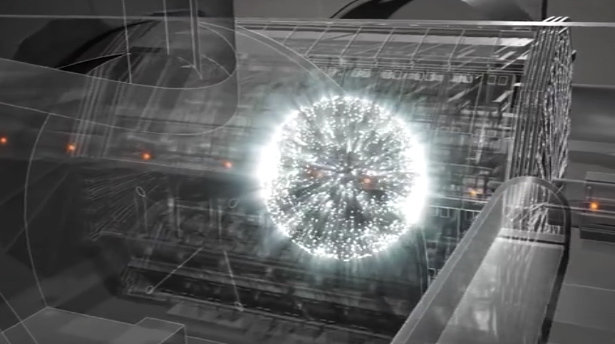The Oracle of Arithmetic

In 2010, a startling rumor filtered through the number theory community and reached Jared Weinstein (opens a new tab). Apparently, some graduate student at the University of Bonn in Germany had written a paper (opens a new tab) that redid “Harris-Taylor” — a 288-page book dedicated to a single impenetrable proof in number theory — in only 37 pages. The 22-year-old student, Peter Scholze (opens a new tab), had found a way to sidestep one of the most complicated parts of the proof, which deals with a sweeping connection between number theory and geometry.
“It was just so stunning for someone so young to have done something so revolutionary,” said Weinstein, a 34-year-old number theorist now at Boston University. “It was extremely humbling.”
Mathematicians at the University of Bonn, who made Scholze a full professor just two years later, were already aware of his extraordinary mathematical mind. After he posted his Harris-Taylor paper, experts in number theory and geometry started to notice Scholze too.
Since that time, Scholze, now 28, has risen to eminence in the broader mathematics community. Prize citations have called him “already one of the most influential mathematicians in the world (opens a new tab)” and “a rare talent which only emerges every few decades (opens a new tab).” He is spoken of as a heavy favorite for the Fields Medal, one of the highest honors in mathematics.
Scholze’s key innovation — a class of fractal structures he calls perfectoid spaces — is only a few years old, but it already has far-reaching ramifications in the field of arithmetic geometry, where number theory and geometry come together. Scholze’s work has a prescient quality, Weinstein said. “He can see the developments before they even begin.”
Many mathematicians react to Scholze with “a mixture of awe and fear and exhilaration,” said Bhargav Bhatt (opens a new tab), a mathematician at the University of Michigan who has written joint papers with Scholze.
That’s not because of his personality, which colleagues uniformly describe as grounded and generous. “He never makes you feel that he’s, well, somehow so far above you,” said Eugen Hellmann (opens a new tab), Scholze’s colleague at the University of Bonn.
Instead, it’s because of his unnerving ability to see deep into the nature of mathematical phenomena. Unlike many mathematicians, he often starts not with a particular problem he wants to solve, but with some elusive concept that he wants to understand for its own sake. But then, said Ana Caraiani (opens a new tab), a number theorist at Princeton University who has collaborated with Scholze, the structures he creates “turn out to have applications in a million other directions that weren’t predicted at the time, just because they were the right objects to think about.”
Learning Arithmetic
Scholze started teaching himself college-level mathematics at the age of 14, while attending Heinrich Hertz Gymnasium, a Berlin high school specializing in mathematics and science. At Heinrich Hertz, Scholze said, “you were not being an outsider if you were interested in mathematics.”
At 16, Scholze learned that a decade earlier Andrew Wiles had proved the famous 17th-century problem known as Fermat’s Last Theorem, (opens a new tab)which says that the equation xn + yn = zn has no nonzero whole-number solutions if n is greater than two. Scholze was eager to study the proof, but quickly discovered that despite the problem’s simplicity, its solution uses some of the most cutting-edge mathematics around. “I understood nothing, but it was really fascinating,” he said.
So Scholze worked backward, figuring out what he needed to learn to make sense of the proof. “To this day, that’s to a large extent how I learn,” he said. “I never really learned the basic things like linear algebra, actually — I only assimilated it through learning some other stuff.”
As Scholze burrowed into the proof, he became captivated by the mathematical objects involved — structures called modular forms and elliptic curves that mysteriously unify disparate areas of number theory, algebra, geometry and analysis. Reading about the kinds of objects involved was perhaps even more fascinating than the problem itself, he said.
Scholze’s mathematical tastes were taking shape. Today, he still gravitates toward problems that have their roots in basic equations about whole numbers. Those very tangible roots make even esoteric mathematical structures feel concrete to him. “I’m interested in arithmetic, in the end,” he said. He’s happiest, he said, when his abstract constructions lead him back around to small discoveries about ordinary whole numbers.
After high school, Scholze continued to pursue this interest in number theory and geometry at the University of Bonn. In his mathematics classes there, he never took notes, recalled Hellmann, who was his classmate. Scholze could understand the course material in real time, Hellmann said. “Not just understand, but really understand on some kind of deep level, so that he also would not forget.”
Scholze began doing research in the field of arithmetic geometry, which uses geometric tools to understand whole-number solutions to polynomial equations — equations such as xy2 + 3y = 5 that involve only numbers, variables and exponents. For some equations of this type, it is fruitful to study whether they have solutions among alternative number systems called p-adic numbers, which, like the real numbers, are built by filling in the gaps between whole numbers and fractions. But these systems are based on a nonstandard notion of where the gaps lie, and which numbers are close to each other: In a p-adic number system, two numbers are considered close not if the difference between them is small, but if that difference is divisible many times by p.
It’s a strange criterion, but a useful one. The 3-adic numbers, for example, provide a natural way to study equations like x2 = 3y2, in which factors of three are key.
P-adic numbers are “far removed from our everyday intuitions,” Scholze said. Over the years, though, they have come to feel natural to him. “Now I find real numbers much, much more confusing than p-adic numbers. I’ve gotten so used to them that now real numbers feel very strange.”
Mathematicians had noticed in the 1970s that many problems concerning p-adic numbers become easier if you expand the p-adic numbers by creating an infinite tower of number systems in which each one wraps around the one below it p times, with the p-adic numbers at the bottom of the tower. At the “top” of this infinite tower is the ultimate wraparound space — a fractal object that is the simplest example of the perfectoid spaces Scholze would later develop.
Scholze set himself the task of sorting out why this infinite wraparound construction makes so many problems about p-adic numbers and polynomials easier. “I was trying to understand the core of this phenomenon,” he said. “There was no general formalism that could explain it.”
He eventually realized that it’s possible to construct perfectoid spaces for a wide variety of mathematical structures. These perfectoid spaces, he showed, make it possible to slide questions about polynomials from the p-adic world into a different mathematical universe in which arithmetic is much simpler (for instance, you don’t have to carry when performing addition). “The weirdest property about perfectoid spaces is that they can magically move between the two number systems,” Weinstein said.
This insight allowed Scholze to prove part of a complicated statement (opens a new tab) about the p-adic solutions to polynomials, called the weight-monodromy conjecture, which became his 2012 doctoral thesis. The thesis “had such far-reaching implications that it was the topic of study groups all over the world,” Weinstein said.
Scholze “found precisely the correct and cleanest way to incorporate all the previously done work and find an elegant formulation for that — and then, because he found really the correct framework, go way beyond the known results,” Hellmann said.
Flying Over the Jungle
Despite the complexity of perfectoid spaces, Scholze is known for the clarity of his talks and papers. “I don’t really understand anything until Peter explains it to me,” Weinstein said.
Scholze makes a point of trying to explain his ideas at a level that even beginning graduate students can follow, Caraiani said. “There’s this sense of openness and generosity in terms of ideas,” she said. “And he doesn’t just do that with a few senior people, but really, a lot of young people have access to him.” Scholze’s friendly, approachable demeanor makes him an ideal leader in his field, Caraiani said. One time, when she and Scholze were on a difficult hike with a group of mathematicians, “he was the one running around making sure that everyone made it and checking up on everyone,” Caraiani said.
Yet even with the benefit of Scholze’s explanations, perfectoid spaces are hard for other researchers to grasp, Hellmann said. “If you move a little bit away from the path, or the way that he prescribes, then you’re in the middle of the jungle and it’s actually very hard.” But Scholze himself, Hellmann said, “would never lose himself in the jungle, because he’s never trying to fight the jungle. He’s always looking for the overview, for some kind of clear concept.”
Scholze avoids getting tangled in the jungle vines by forcing himself to fly above them: As when he was in college, he prefers to work without writing anything down. That means that he must formulate his ideas in the cleanest way possible, he said. “You have only some kind of limited capacity in your head, so you can’t do too complicated things.”
While other mathematicians are now starting to grapple with perfectoid spaces, some of the most far-reaching discoveries about them, not surprisingly, have come from Scholze and his collaborators. In 2013, a result he posted online “really kind of stunned the community,” Weinstein said. “We had no idea that such a theorem was on the horizon.”
Scholze’s result (opens a new tab) expanded the scope of rules known as reciprocity laws, which govern the behavior of polynomials that use the arithmetic of a clock (though not necessarily one with 12 hours). Clock arithmetics (in which, for example, 8 + 5 = 1 if the clock has 12 hours) are the most natural and widely studied finite number systems in mathematics.
Reciprocity laws are generalizations of the 200-year-old quadratic reciprocity law, a cornerstone of number theory and one of Scholze’s personal favorite theorems. The law states that given two prime numbers p and q, in most cases p is a perfect square on a clock with q hours exactly when q is a perfect square on a clock with p hours. For example, five is a perfect square on a clock with 11 hours, since 5 = 16 = 42, and 11 is a perfect square on a clock with five hours, since 11 = 1 = 12.
“I find it very surprising,” Scholze said. “On the face of it, these two things seem to have nothing to do with each other.”
“You can interpret a lot of modern algebraic number theory as just attempts to generalize this law,” Weinstein said.
In the middle of the 20th century, mathematicians discovered an astonishing link between reciprocity laws and what seemed like an entirely different subject: the “hyperbolic” geometry of patterns such as M.C. Escher’s famous angel-devil tilings of a disk (opens a new tab). This link is a core part of the “Langlands program,” a collection of interconnected conjectures and theorems about the relationship between number theory, geometry and analysis. When these conjectures can be proved, they are often enormously powerful: For instance, the proof of Fermat’s Last Theorem boiled down to solving one small (but highly nontrivial) section of the Langlands program.
Mathematicians have gradually become aware that the Langlands program extends far beyond the hyperbolic disk; it can also be studied in higher-dimensional hyperbolic spaces and a variety of other contexts. Now, Scholze has shown how to extend the Langlands program to a wide range of structures in “hyperbolic three-space” — a three-dimensional analogue of the hyperbolic disk — and beyond. By constructing a perfectoid version of hyperbolic three-space, Scholze has discovered an entirely new suite of reciprocity laws.
“Peter’s work has really completely transformed what can be done, what we have access to,” Caraiani said.
Scholze’s result, Weinstein said, shows that the Langlands program is “deeper than we thought … it’s more systematic, it’s ever-present.”
Fast Forward
Discussing mathematics with Scholze is like consulting a “truth oracle,” according to Weinstein. “If he says, ‘Yes, it is going to work,’ you can be confident of it; if he says no, you should give right up; and if he says he doesn’t know — which does happen — then, well, lucky you, because you’ve got an interesting problem on your hands.”
Yet collaborating with Scholze is not as intense an experience as might be expected, Caraiani said. When she worked with Scholze, there was never a sense of hurry, she said. “It felt like somehow we were always doing things the right way — somehow proving the most general theorem that we could, in the nicest way, doing the right constructions that will illuminate things.”
There was one occasion, though, when Scholze himself did hurry — while trying to finish up a paper in late 2013, shortly before the birth of his daughter. It was a good thing he pushed himself then, he said. “I didn’t get much done afterwards.”
Becoming a father has forced him to become more disciplined in how he uses his time, Scholze said. But he doesn’t have to make a point of blocking off time for research — mathematics simply fills all the spaces between his other obligations. “Mathematics is my passion, I guess,” he said. “I always want to think about it.”
Yet he is not at all inclined to romanticize this passion. Asked if he felt he was meant to be a mathematician, he demurred. “That sounds too philosophical,” he said.
A private person, he is somewhat uncomfortable with his growing celebrity (in March, for example, he became the youngest recipient ever of Germany’s prestigious Leibniz Prize (opens a new tab), which awards 2.5 million euros to be used for future research). “At times it’s a bit overwhelming,” he said. “I try to not let my daily life get influenced by it.”
Scholze continues to explore perfectoid spaces, but he has also branched out into other areas of mathematics touching on algebraic topology, which uses algebra to study shapes. “Over the course of the last year and a half, Peter has become a complete master of the subject,” Bhatt said. “He changed the way [the experts] think about it.”
It can be scary but also exciting for other mathematicians when Scholze enters their field, Bhatt said. “It means the subject is really going to move fast. I’m ecstatic that he’s working in an area that’s close to mine, so I actually see the frontiers of knowledge moving forward.”
Yet to Scholze, his work thus far is just a warm-up. “I’m still in the phase where I’m trying to learn what’s there, and maybe rephrasing it in my own words,” he said. “I don’t feel like I’ve actually started doing research.”
This article was reprinted on Wired.com (opens a new tab).



